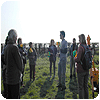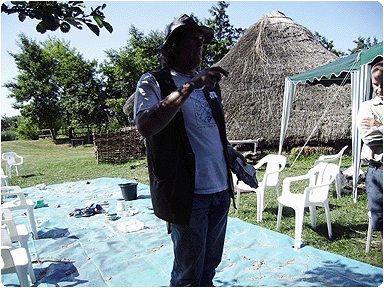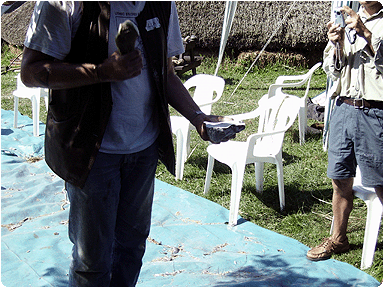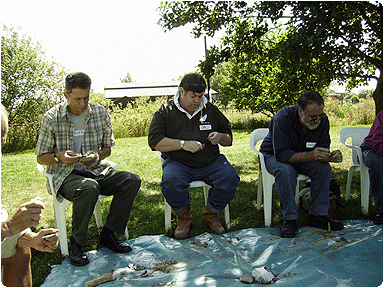










 |
||
|
Myself, Matt and Chris recently took a trip down to Flag Fen to attend a one day flint knapping workshop. The day started with a little drive down to Peterborough and then the short distance to Flag Fen, where upon arrival we were welcomed by a very blue sky and a warm gentle breeze. When inside the main building we were welcomed in and then had a look around as the other people arrived to take part in the course. Once everyone had arrived we were greeted by Allan Course who was soon to lead us out to the reconstruction of an Iron Age round house, where he will be showing and teaching us the ins and outs of flint knapping, hopefully leaving us with the basics of how flint tools are manufactured and a clue as to the thoughts of the people manufacturing such tools thousands of years ago. We walked out to the area set aside for us to learn about flint knapping, we soon gathered under the shade of a nearby tree and Allan began to take us through the basics behind flint knapping and the flint itself.  Here Allan is just explaining the different types of flint found in its natural form, tabular (as the name implies, thin and flat) and nodular (an uneven irregular shape). The flint is found as seams within chalk deposits.  Here Allan is demonstrating how the flint is broken, he is using the base of an antler as a hammer to break flakes off, that can later be used for a variety of tools. The tabular flint is a good shape to begin with to start making an axe, most of the flakes that are produced during this process can be used for a variety of tools, such as scrapers, knives and arrow heads to name a few.  We were soon to have a go ourselves. Here Chris (middle) is just starting to work a flake through percussive knapping, using a hammer stone to strike the flint. Using a striking angle of around 45 to 60 degrees the flint can then be shaped to suit the use you may have for it. Since this was our first go, we were just making anything from the flakes we had been given which was very interesting just experimenting with different ways of striking the flint and seeing the results. |
||
| ||
v.4 'Rise of the Screen' |